
Viljandi is a town and municipality in southern Estonia with a population of 17,407 in 2019. It is the capital of Viljandi County and is geographically located between two major Estonian cities, Pärnu and Tartu. The town was first mentioned in 1283, upon being granted its town charter by Wilhelm von Endorpe. The town became a member of the Hanseatic League at the beginning of the 14th century, and is one of five Estonian towns and cities in the league. The once influential Estonian newspaper Sakala was founded in Viljandi in 1878.

Pärnu is the fourth-largest city in Estonia. Situated in southwest Estonia, Pärnu is located 128 kilometres (80 mi) south of the Estonian capital, Tallinn, and 176 kilometres (109 mi) west of Estonia's second-largest city, Tartu. The city sits off the coast of Pärnu Bay, an inlet of the Gulf of Riga, which is a part of the Baltic Sea. In the city, the Pärnu River drains into the Gulf of Riga.
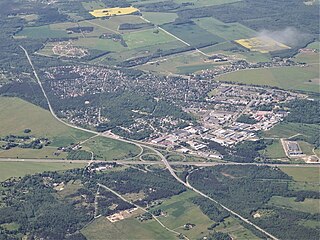
Saue is a town in north-western Estonia. It is the administrative centre of Saue Parish in Harju County.

Haapsalu is a seaside resort town located on the west coast of Estonia. It is the administrative centre of Lääne County, and on 1 January 2020 it had a population of 9,375.

Rapla (German: Rappel is a town in north-central Estonia, the capital of Rapla County and the centre of Rapla Parish.
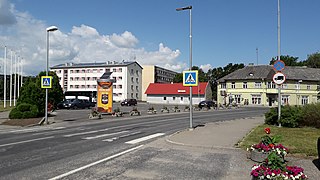
Tapa is a town in Tapa Parish, Lääne-Viru County, Estonia, located at the junction of the country's Tallinn–Narva (west–east) and Tallinn–Tartu–Valga (north–south) railway lines. Tapa has the Estonian Defense Forces nearby Keskpolügoon. The Valgejõgi River passes Tapa on its northeastern side. Tapa has been known as both a railway and a military town throughout its history.

Maardu is a town and a municipality in Harju County, Estonia. It is part of Tallinn metropolitan area, located about 15 kilometres (9.3 mi) east of the capital city. The town covers an area of 22.76 km2 and has a population of 16,170.

Jõhvi is a town in northeastern Estonia, and the administrative seat of Ida-Viru County and Jõhvi Parish. The town is located about 50 km west of the Estonia–Russia international border.

Keila is a town and an urban municipality in Harju County in north-western Estonia, 25 km (16 mi) southwest of Tallinn. As of 2021, the town has a population of 10,499 inhabitants.

Võru is a town and a municipality in south-eastern Estonia. It is the capital of Võru County and the centre of Võru Parish.

Kärdla is the only town on the island of Hiiumaa, Estonia. It is the capital of Hiiu County and the administrative center of Hiiumaa Parish.

Kallaste is a town in Peipsiääre Parish, Tartu County, Estonia. It is located on the western shore of Lake Peipus. Most of the population are Russians, 15% being Estonians.

Jõgeva is a small town in Estonia with a population of around 5000 people. It is the capital of Jõgeva Parish and Jõgeva County.

Kunda is a town in Viru-Nigula Parish, Lääne-Viru County, Estonia, located on the coast of the Gulf of Finland. Kunda is best known for its cement factory, port, and archaeological heritage.
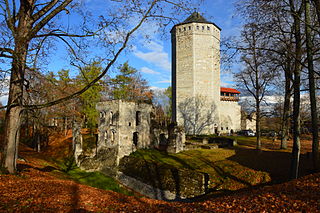
Paide is a town in Estonia and the capital of Järva County, one of the 15 counties of Estonia.

Põltsamaa is a town in Põltsamaa Parish, Jõgeva County, Estonia. The town stands on the Põltsamaa River, and it features a 13th-century castle.

Türi is a town in Järva County, Estonia. It is the administrative centre of Türi Parish. Since 2000, Türi is known as the "spring capital" of Estonia. It has a railway station on the Tallinn - Viljandi railway line operated by Elron.

Kiviõli is an industrial town in Ida-Viru County, Estonia, established in 1922. The main industry in the town is oil shale mining, which gives the town its name.
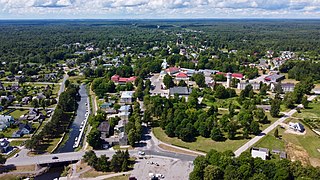
Mustvee is a town in Estonia. It lies on the west coast of Lake Peipus, and is administratively part of the Mustvee Parish in Jõgeva County. Ethnic Estonians and Russians both make up around half of its current population of approximately 1,600.
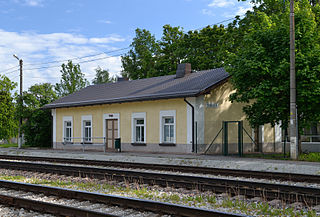
Tamsalu is a town in Tapa Parish, Lääne-Viru County, Estonia.




























